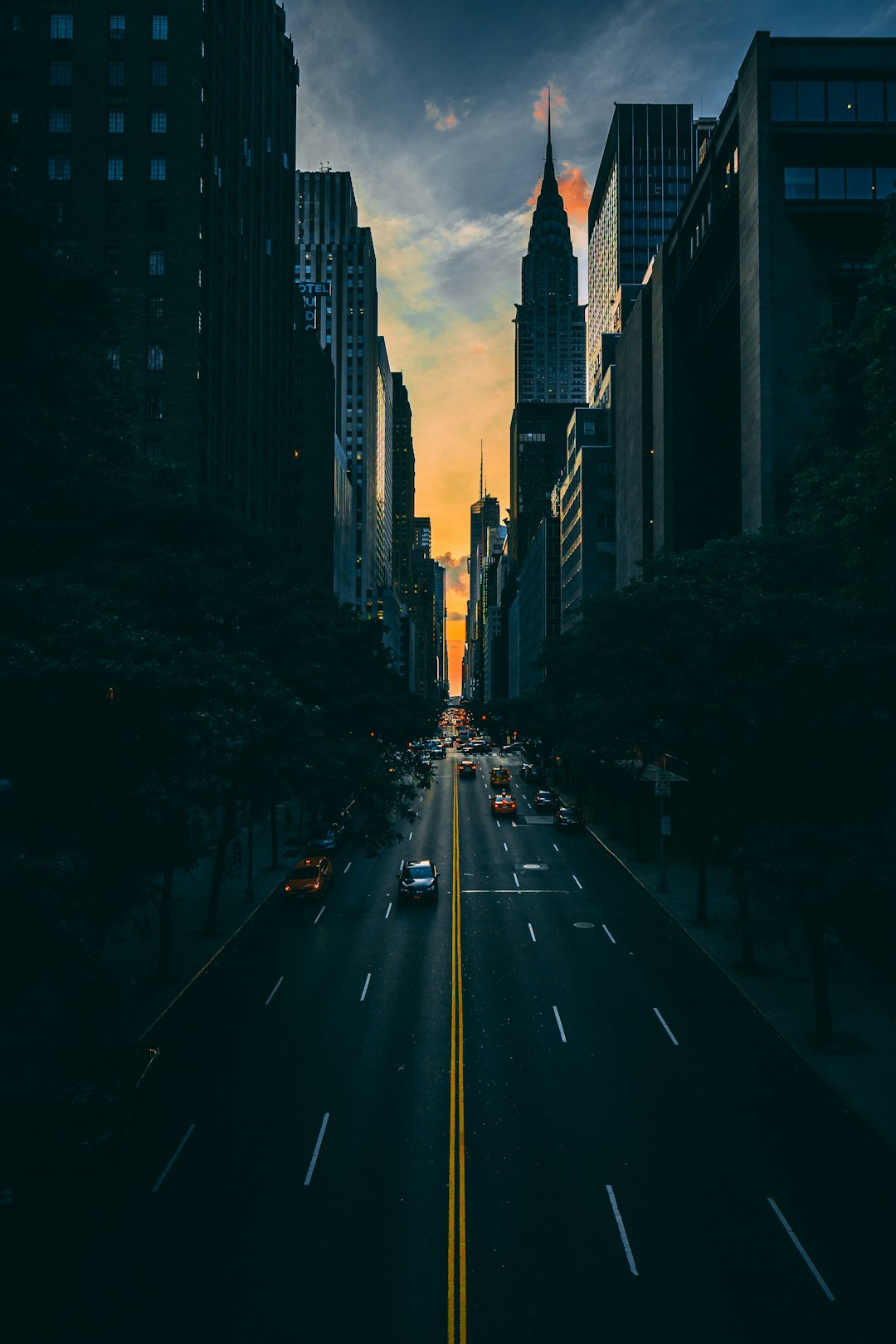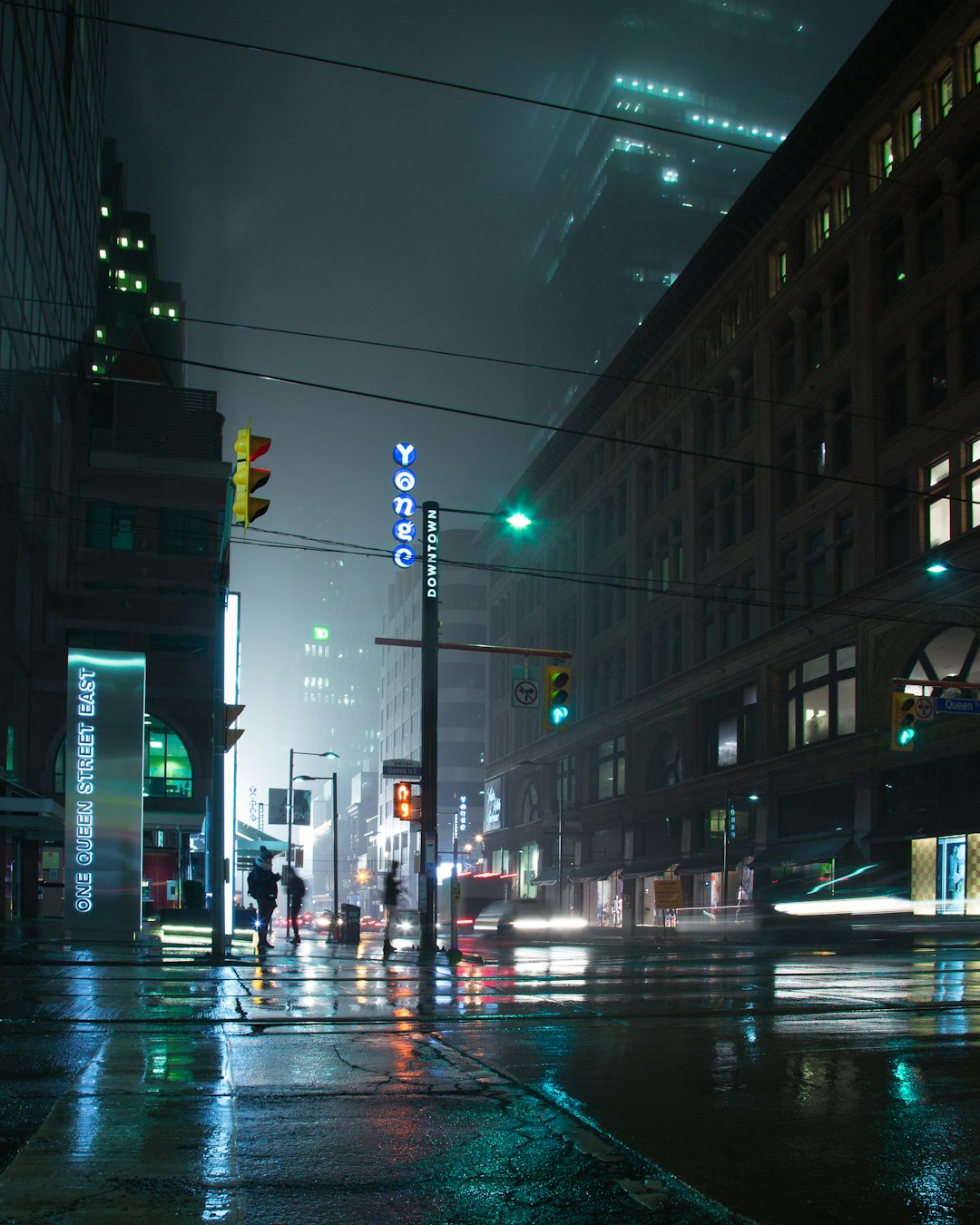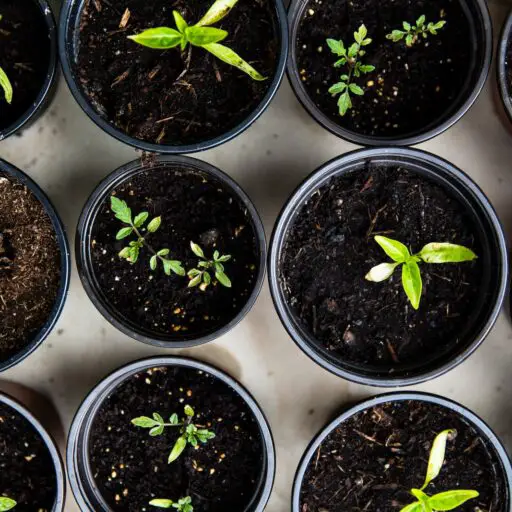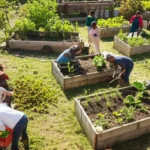Support our educational content for free when you purchase through links on our site. Learn more

Imagine turning your tiny balcony or rooftop into a lush, green paradise bursting with fresh herbs, vibrant flowers, and even homegrown veggies — all thriving despite the city’s concrete jungle. Urban gardening isn’t just a trend; it’s a powerful way to reconnect with nature, boost your mental health, and enjoy delicious, home-harvested food. But with limited space, pollution, and tricky microclimates, what plants truly shine in urban settings?
In this ultimate 2025 guide, we reveal the top 15 plants perfectly suited for urban gardening, from low-maintenance natives to vertical garden champions. Plus, we’ll share expert tips on containers, soil, and overcoming common city challenges. Ready to unlock the secrets of growing green in the city? Keep reading — your urban oasis awaits!
Key Takeaways
- Choose plants adapted to your space and light: From sun-loving cherry tomatoes to shade-tolerant ferns, matching plants to your microclimate is essential.
- Top 15 plants for urban gardens: Includes edible favorites like basil and strawberries, hardy natives, and stunning ornamentals.
- Maximize space with vertical gardening and smart containers: Vertical planters and self-watering pots make small spaces bloom big.
- Sustainable practices matter: Native plants, composting, and organic care reduce environmental impact and boost garden health.
- Overcome urban challenges: Use clean soil, pollution-tolerant species, and companion planting to thrive despite city hurdles.
👉 Shop recommended gear:
- Lechuza Self-Watering Planters on Amazon | Lechuza Official
- GreenStalk Vertical Planters on Amazon | GreenStalk Official
- Rachio Smart Irrigation Systems on Amazon | Rachio Official
Table of Contents
- ⚡️ Quick Tips and Facts for Urban Gardening Success
- 🌿 Urban Gardening Origins: How City Farming Took Root
- 1. Top 15 Plants Perfect for Urban Gardening Spaces
- 2. Best Edible Plants for Small Urban Gardens and Balconies
- 3. Low-Maintenance Plants That Thrive in City Environments
- 4. Native Plants for Urban Gardens: Why They Matter
- 5. Vertical Gardening: Maximizing Space with Climbing and Hanging Plants
- 6. Container Gardening Essentials: Choosing the Right Pots and Soil
- 7. Urban Gardening Locations: Best Spots in Your City to Grow Plants
- 8. Overcoming Urban Gardening Challenges: Pollution, Shade, and Space
- 9. Seasonal Planting Guide for Urban Gardeners
- 10. Sustainable Urban Gardening: Eco-Friendly Practices and Tips
- 🌱 Tools and Tech: Must-Have Gear for Urban Gardeners
- 🌸 Inspiring Urban Garden Success Stories from Around the World
- 🔚 Conclusion: Growing Green in the Concrete Jungle
- 🔗 Recommended Links for Urban Gardening Enthusiasts
- ❓ FAQ: Your Burning Questions About Urban Gardening Answered
- 📚 Reference Links and Further Reading
⚡️ Quick Tips and Facts for Urban Gardening Success
Urban gardening is like a green revolution in the concrete jungle — and we at Community Gardening™ love helping you grow your own oasis! Whether you’re on a balcony, rooftop, or tiny backyard, choosing the right plants is key to thriving urban greenery. Before we dive into the juicy plant lists, here are some quick, actionable tips to get you started:
Quick Tips from Our Gardeners
- Start small and grow smart: Pick plants suited for containers or limited soil depth.
- Sunlight matters: Most edible plants need 6+ hours of sun, but some shade-tolerant natives can thrive with less.
- Soil is your secret weapon: Use high-quality potting mix with good drainage and organic matter.
- Water wisely: Urban heat can dry out containers fast — self-watering pots or drip irrigation help keep moisture steady.
- Companion planting: Pair plants with complementary needs and pest resistance (think tomatoes + basil).
- Pollinator-friendly: Include flowers like marigolds or native asters to attract bees and butterflies.
- Seasonal rotation: Change crops seasonally to keep soil healthy and maximize yield.
Fascinating Facts
| Fact | Detail | Source |
|---|---|---|
| Urban gardens can reduce city temperatures by up to 5°F | Green spaces cool microclimates and improve air quality | EPA Urban Heat Island |
| Container depth affects plant choice | 4-5″ for herbs, 10-12″ for tomatoes and peppers | Capital Area Food Bank |
| Native plants require less water and fertilizer | They’re adapted to local conditions and support local wildlife | Wild Ones Native Plants |
Ready to dig deeper? Check out our full guide on Community gardening plants to get inspired.
🌿 Urban Gardening Origins: How City Farming Took Root
Urban gardening isn’t just a trendy hobby — it’s a movement rooted in history and necessity. From Victory Gardens during World Wars to modern community plots, city dwellers have long sought to reclaim green space and grow food close to home.
The Roots of Urban Gardening
- Victory Gardens (WWI & WWII): Citizens grew vegetables in backyards and parks to support the war effort, boosting morale and food security.
- Community Gardens Movement: Post-war urban decline saw vacant lots transformed into shared gardens, fostering social ties and beautifying neighborhoods.
- Modern Urban Farming: Today’s urban gardeners embrace sustainability, local food, and biodiversity, often integrating technology like hydroponics and vertical farming.
Why Urban Gardening Matters Today
- Food justice: Access to fresh produce in food deserts.
- Environmental benefits: Reduces carbon footprint and urban heat islands.
- Mental health: Gardening reduces stress and builds community.
Learn more about the benefits of community gardens and how you can join the green revolution.
1. Top 15 Plants Perfect for Urban Gardening Spaces
Choosing the right plants is like picking the perfect cast for your urban garden stage. Here’s our top 15 list combining beauty, edibility, and resilience — all crowd-pleasers in tight city spaces.
| Plant Name | Type | Ideal Conditions | Why We Love It |
|---|---|---|---|
| Cherry Tomatoes | Edible | Full sun, 10-12″ soil depth | Compact, prolific, perfect for containers |
| Basil | Herb | Full sun, 4-5″ soil depth | Companion plant, fragrant, pest-repellent |
| Lettuce (Leafy Greens) | Edible | Partial sun, 4-5″ soil depth | Fast-growing, multiple harvests |
| Swiss Chard (Rainbow Chard) | Edible | Full sun, 8-9″ soil depth | Colorful stems, nutritious, heat tolerant |
| Peppers (Bell & Chili) | Edible | Full sun, 10-12″ soil depth | Adds spice and color |
| Marigolds | Flower | Full sun, any soil | Pest deterrent, pollinator magnet |
| Nasturtiums | Flower/Edible | Full sun to partial shade | Edible flowers, pest control |
| Rosemary | Herb | Full sun, well-drained soil | Hardy, aromatic, evergreen |
| Mint | Herb | Partial shade, moist soil | Vigorous, best in pots to contain spread |
| Kale | Edible | Full sun, 8-9″ soil depth | Cold-hardy, nutrient-dense |
| Strawberries | Edible | Full sun, 6-8″ soil depth | Sweet, compact, great for hanging baskets |
| Sunflowers (Dwarf varieties) | Flower | Full sun, 10-12″ soil depth | Cheerful, attracts pollinators |
| Succulents (e.g., Sedum) | Ornamental | Full sun, well-drained soil | Low water, architectural interest |
| Ferns (e.g., Polystichum setiferum) | Ornamental | Shade, moist soil | Adds lush greenery to shady spots |
| Lavender | Herb/Flower | Full sun, well-drained soil | Fragrant, drought-tolerant, pollinator-friendly |
Why These Plants?
- Versatility: Many thrive in containers or small plots.
- Low maintenance: Perfect for busy urbanites.
- Pollinator-friendly: Support urban biodiversity.
For more edible options, explore our Edible Plants category.
2. Best Edible Plants for Small Urban Gardens and Balconies
Craving fresh herbs and veggies but short on space? We’ve got you covered with plants that pack a punch in small containers and deliver big flavors.
Our Favorites for Edible Urban Gardens
- Herbs: Basil, chives, thyme, parsley, mint (in pots to prevent spreading)
- Leafy Greens: Lettuce, spinach, arugula, kale
- Compact Veggies: Cherry tomatoes, bush beans, radishes, peppers
- Fruits: Strawberries, dwarf blueberries, and even patio citrus trees
Soil Depth and Container Size Guide
| Plant | Minimum Soil Depth | Container Size (Diameter) |
|---|---|---|
| Herbs (basil, chives) | 4-5″ | 6-8″ |
| Leafy greens (lettuce, spinach) | 4-6″ | 8-10″ |
| Bush beans, radishes | 6-7″ | 10-12″ |
| Tomatoes, peppers | 10-12″ | 12-16″ |
| Strawberries | 6-8″ | Hanging basket or 10-12″ pot |
Pro Tips
- Use self-watering containers like the Lechuza Cubico or Bloem Saturn for consistent moisture.
- Rotate crops seasonally to avoid soil depletion.
- Companion plant tomatoes with basil and onions to boost growth and flavor.
👉 CHECK PRICE on:
- Lechuza Cubico: Amazon | Lechuza Official Website
- Bloem Saturn: Amazon | Bloem Official Website
3. Low-Maintenance Plants That Thrive in City Environments
Not everyone has hours to tend their urban jungle. If you want greenery that’s tough as nails, these plants laugh in the face of pollution, irregular watering, and cramped roots.
Our Top Picks for Low-Maintenance Urban Plants
- Succulents: Sedum, Echeveria, Aloe Vera — drought-tolerant and stylish.
- Bamboo (Phyllostachys aureosulcata): Great for privacy screens; grow in containers to control spread.
- Euphorbia characias: Architectural evergreen with striking yellow flowers.
- Hardy ferns: Polystichum setiferum thrives in shady, humid urban spots.
- Lavender: Drought-tolerant, fragrant, and pest-resistant.
- Heuchera: Colorful foliage, low water needs, shade tolerant.
Why They Work
- Adapted to harsh conditions like heat, wind, and pollution.
- Require minimal watering once established.
- Provide year-round interest with foliage and flowers.
Maintenance Tips
- Use high-quality, well-draining soil to avoid root rot.
- Group plants with similar watering needs together.
- Mulch containers to retain moisture and regulate temperature.
4. Native Plants for Urban Gardens: Why They Matter
Native plants are the unsung heroes of urban gardening. They’re adapted to local climate, support native pollinators, and often require less water and care.
Benefits of Native Plants in Cities
- Water-wise: Thrive with natural rainfall once established.
- Wildlife support: Feed native bees, butterflies, and birds.
- Soil health: Improve soil structure and reduce erosion.
- Resilience: Better resistance to local pests and diseases.
Recommended Native Plants for Urban Containers
| Plant Name | Type | Sun Exposure | Special Notes |
|---|---|---|---|
| Aquilegia canadensis (Wild columbine) | Perennial flower | Partial shade | Attracts hummingbirds |
| Coreopsis lanceolata (Lanceleaf coreopsis) | Perennial flower | Full sun | Long bloom period |
| Symphyotrichum ericoides (Heath aster) | Perennial flower | Full sun | Late-season pollinator magnet |
| Carex spp. (Sedges) | Graminoid | Shade to sun | Adds structure, great “nurse” plants |
| Monarda punctata (Spotted beebalm) | Perennial flower | Full sun | Attracts wasps and pollinators |
Potting Tips for Native Plants
- Use deep pots (16″+) to accommodate long roots.
- Insulate pots with Styrofoam to protect from freeze-thaw cycles.
- Amend soil with sand or peat depending on moisture needs.
For a detailed list and insights, check out the Wild Ones Native Plant Container Gardening guide.
5. Vertical Gardening: Maximizing Space with Climbing and Hanging Plants
When horizontal space is scarce, think vertical! Vertical gardening transforms walls, fences, and balconies into lush, productive green walls.
Best Plants for Vertical Urban Gardens
- Climbers: Peas, pole beans, cucumbers, nasturtiums, sweet peas
- Espaliered fruit trees: Apples, pears trained flat against walls
- Hanging plants: Strawberries, herbs like thyme and oregano, trailing succulents
- Vining flowers: Clematis, morning glory, and jasmine for scent and color
How to Set Up a Vertical Garden
- Choose your structure: Trellises, wall-mounted planters, hanging baskets, or DIY pallet gardens.
- Select lightweight containers: To avoid overloading balconies or fences.
- Use quality potting mix: Lightweight and well-draining for vertical setups.
- Water consistently: Vertical gardens dry out faster; consider drip irrigation or self-watering planters.
Benefits of Vertical Gardening
- Maximizes limited space.
- Improves air circulation, reducing fungal diseases.
- Adds privacy and aesthetic appeal.
Explore creative ideas in our Garden Design Ideas for vertical gardening inspiration.
6. Container Gardening Essentials: Choosing the Right Pots and Soil
Containers are the backbone of urban gardening. Picking the right pot and soil mix can make or break your green dreams.
Pot Material Comparison
| Material | Pros | Cons | Best For |
|---|---|---|---|
| Terracotta | Breathable, classic look | Breaks in freeze-thaw, dries out fast | Mediterranean herbs, succulents |
| Plastic | Lightweight, retains moisture | Less breathable, can heat roots | Vegetables, herbs |
| Fiberglass | Durable, lightweight, freeze-resistant | Higher cost | Year-round container gardens |
| Concrete | Very durable, insulating | Heavy, expensive | Large planters, trees |
| Fabric Grow Bags | Excellent drainage, root pruning | Less aesthetic, dries quickly | Vegetables, root crops |
Soil Mix Recommendations
- Use high-quality commercial potting mix with organic matter.
- Add perlite or vermiculite for drainage.
- Amend with compost or worm castings for nutrients.
- Avoid garden soil; it compacts and drains poorly in containers.
Step-by-Step Container Setup
- Choose pot with drainage holes.
- Add a layer of gravel or broken pottery for drainage (optional).
- Fill with potting mix amended with compost.
- Plant your chosen greenery, firm soil gently.
- Water thoroughly and place in appropriate light.
7. Urban Gardening Locations: Best Spots in Your City to Grow Plants
Finding the right spot in the city can feel like a treasure hunt. Here’s where to look for your urban garden’s sweet spot.
Ideal Urban Gardening Locations
- Balconies and patios: Most common and accessible.
- Rooftops: Great sun exposure, but watch for wind and weight limits.
- Community garden plots: Shared spaces with rich soil and social benefits.
- Window sills and ledges: Perfect for herbs and small pots.
- Vacant lots and alleyways: With permission, transform these spaces into mini-oases.
Microclimate Considerations
- South-facing spots get the most sun.
- Walls and fences can create warmer microclimates for tender plants.
- Shady corners suit ferns, leafy greens, and native shade plants.
Check out our guide on Community Garden Policies to learn about accessing public spaces.
8. Overcoming Urban Gardening Challenges: Pollution, Shade, and Space
Urban gardening isn’t without its hurdles, but with a little know-how, you can turn challenges into opportunities.
Pollution and Soil Contamination
- Use raised beds or containers with clean soil to avoid contaminated ground.
- Wash produce thoroughly.
- Choose plants less prone to heavy metal uptake, like tomatoes and herbs.
Limited Sunlight and Shade
- Opt for shade-tolerant plants like ferns, hostas, and leafy greens.
- Use reflective surfaces (white walls, mirrors) to boost light.
- Prune surrounding trees or structures if possible to increase sun exposure.
Space Constraints
- Use vertical gardening and tiered planters.
- Select dwarf or compact plant varieties.
- Rotate crops seasonally to maximize yield.
9. Seasonal Planting Guide for Urban Gardeners
Timing is everything! Here’s a quick seasonal guide to keep your urban garden flourishing year-round.
| Season | Recommended Plants | Tips |
|---|---|---|
| Spring | Lettuce, peas, radishes, spinach | Start seeds indoors if needed |
| Summer | Tomatoes, peppers, basil, beans | Water deeply, mulch to retain moisture |
| Fall | Kale, broccoli, carrots, garlic | Plant fall crops early for harvest before frost |
| Winter | Herbs (rosemary, thyme), hardy greens (collards) | Use cold frames or grow indoors |
10. Sustainable Urban Gardening: Eco-Friendly Practices and Tips
Going green means more than just plants — it’s about sustainability and stewardship.
How to Garden Sustainably in the City
- Compost kitchen scraps to enrich your soil.
- Collect rainwater for irrigation.
- Use organic fertilizers and pest control (e.g., neem oil, insecticidal soap).
- Plant native species to support local ecosystems.
- Reduce plastic use by repurposing containers and using biodegradable pots.
Tools and Tech: Must-Have Gear for Urban Gardeners
Technology meets tradition in the urban garden toolkit. Here’s what we recommend:
| Tool/Tech | Purpose | Our Take |
|---|---|---|
| Soil moisture meter | Prevent over/under watering | Simple, effective, and affordable |
| Self-watering containers | Maintain consistent moisture | Great for busy gardeners |
| LED grow lights | Extend growing season indoors | Perfect for winter or low-light spots |
| Vertical garden kits (e.g., GreenStalk) | Maximize space | Easy to assemble and maintain |
| Smart irrigation systems (e.g., Rachio) | Automate watering | Saves water and time |
👉 Shop smart gear on:
- GreenStalk Vertical Planters: Amazon | GreenStalk Official
- Rachio Smart Sprinkler: Amazon | Rachio Official
🌸 Inspiring Urban Garden Success Stories from Around the World
Nothing motivates like real stories! Here are some inspiring urban gardeners who turned concrete into paradise:
- Brooklyn Grange, NYC: The world’s largest rooftop soil farm, producing over 50,000 pounds of organic vegetables annually.
- Incredible Edible Todmorden, UK: Community-led guerrilla gardening that transformed a town’s food culture.
- Singapore’s Sky Greens: Vertical farming skyscrapers feeding thousands sustainably.
These stories show that anyone can grow green anywhere — and you’re next! For community inspiration, check out our Community Garden Events to connect locally.
We’ve covered a lot of ground, but the best part? Your urban garden journey is just beginning. Ready for the grand finale? Stay tuned for our conclusion and FAQs!
🔚 Conclusion: Growing Green in the Concrete Jungle

Wow, what a journey through the vibrant world of urban gardening! From choosing the perfect plants that thrive in limited spaces and city conditions, to mastering vertical and container gardening techniques, you’re now armed with everything you need to turn your urban nook into a lush, productive paradise.
Wrapping Up Our Urban Gardening Guide
- Plant selection matters: Whether you’re going for edible delights like cherry tomatoes and basil or hardy natives like wild columbine and coreopsis, matching plants to your space, light, and climate is the secret sauce.
- Containers and soil: Invest in quality pots and soil mixes to give your plants the best start. Remember, deeper pots for root lovers and well-draining mixes for happy roots!
- Sustainability is key: Native plants, composting, and eco-friendly practices not only help the environment but make your garden easier to maintain.
- Space hacks: Vertical gardening and smart container setups let you grow more in less space — perfect for balconies and rooftops.
- Challenges are conquerable: Pollution, shade, and limited space? No problem! With the right plants and care, your urban garden will flourish.
If you’re wondering about gear, brands like Lechuza for self-watering pots, GreenStalk vertical planters, and Rachio smart irrigation systems come highly recommended by our team and fellow urban gardeners alike.
So, ready to get your hands dirty and grow together with your community? Your urban garden awaits — and we can’t wait to hear your success stories!
🔗 Recommended Links for Urban Gardening Enthusiasts
Ready to gear up and grow? Here are some of the best products and resources to kickstart your urban garden:
-
Lechuza Cubico Self-Watering Planter:
Amazon | Lechuza Official Website -
Bloem Saturn Planter:
Amazon | Bloem Official Website -
GreenStalk Vertical Planter:
Amazon | GreenStalk Official -
Rachio Smart Sprinkler Controller:
Amazon | Rachio Official -
Books for Urban Gardeners:
❓ FAQ: Your Burning Questions About Urban Gardening Answered

How do I choose the right plants for my urban garden based on climate and space?
Choosing plants starts with assessing your garden’s microclimate and available space. Consider:
- Sunlight: Does your spot get full sun (6+ hours), partial sun, or mostly shade?
- Space: How deep and wide are your containers or garden beds?
- Climate: Are you in a hot, dry city or a cooler, humid one?
For example, if you have a sunny balcony with deep containers, tomatoes, peppers, and basil thrive. For shady spots, ferns, leafy greens, and shade-tolerant natives like wild columbine work better. Always check local USDA hardiness zones and consult native plant guides to pick species adapted to your region.
What are some low-maintenance plants that are perfect for beginner urban gardeners?
Beginners rejoice! Here are some easy-care plants that laugh in the face of neglect:
- Succulents like Sedum and Aloe Vera — drought-tolerant and forgiving.
- Herbs such as rosemary, thyme, and mint (mint in pots to control spread).
- Leafy greens like kale and Swiss chard — fast-growing and resilient.
- Hardy natives like coreopsis and asters that need minimal watering and fertilizer.
These plants require less frequent watering, tolerate urban pollution, and are less prone to pests.
Read more about “Transform Your Yard: 10 Edible Landscaping Ideas! 🌱”
Can I grow my own food in an urban garden, and if so, what are some easy-to-grow options?
Absolutely! Urban gardens can be surprisingly productive. Easy-to-grow edibles include:
- Cherry tomatoes and bush beans: Compact and prolific in containers.
- Leafy greens: Lettuce, spinach, arugula — quick harvests and multiple cuttings.
- Herbs: Basil, chives, parsley — perfect for kitchen windowsills.
- Strawberries: Great for hanging baskets or small pots.
Start with these, and as you gain confidence, try peppers, radishes, or dwarf fruit trees.
How can I use vertical gardening and container gardening to maximize space in my urban garden?
Vertical gardening is a game-changer for small spaces. Use trellises, wall-mounted planters, and hanging baskets to grow vining plants like peas, cucumbers, and nasturtiums. Container gardening lets you move plants to catch the sun or shelter them from wind.
Tips for success:
- Choose lightweight containers for balconies.
- Use self-watering pots to maintain moisture.
- Combine plants with similar water and light needs in the same container.
- Train fruit trees as espalier against walls to save space.
This approach multiplies your growing area without expanding your footprint!
How do I protect my urban garden plants from pollution and pests?
Urban pollution can stress plants, but you can mitigate it by:
- Growing in containers or raised beds with fresh, clean soil.
- Washing edible plants before eating.
- Choosing hardy, pollution-tolerant species like rosemary and lavender.
For pests, use companion planting (e.g., marigolds with tomatoes), organic pest controls like neem oil, and encourage beneficial insects by planting pollinator-friendly flowers.
What are the best practices for overwintering plants in an urban garden?
Winter can be tough, especially in containers. Protect your plants by:
- Moving pots to sheltered spots near walls or indoors.
- Insulating pots with bubble wrap or Styrofoam.
- Mulching soil surface to retain warmth.
- Choosing hardy natives and perennials that survive cold better.
Some plants like lavender and rosemary can overwinter outdoors if protected well.
Read more about “What Vegetables Are in a Community Garden? 15 Must-Grow Picks for 2025! 🌽🥕”
📚 Reference Links and Further Reading
- Capital Area Food Bank: What to Plant in Your Urban Garden
- Gardeners’ World: Plants for Urban Gardens
- Wild Ones: Native Plants for Urban Balconies
- EPA: Urban Heat Island Effect
- Lechuza Planters Official Site
- GreenStalk Vertical Planters
- Rachio Smart Sprinkler System
- Community Gardening™ Benefits of Community Gardens
- Community Gardening™ Edible Plants
- Community Gardening™ Garden Design Ideas
- Community Gardening™ Community Garden Policies
- Community Gardening™ Community Garden Events
Ready to get growing? Remember, every plant you nurture is a small victory for the planet and your soul. 🌱 Happy urban gardening from all of us at Community Gardening™!



